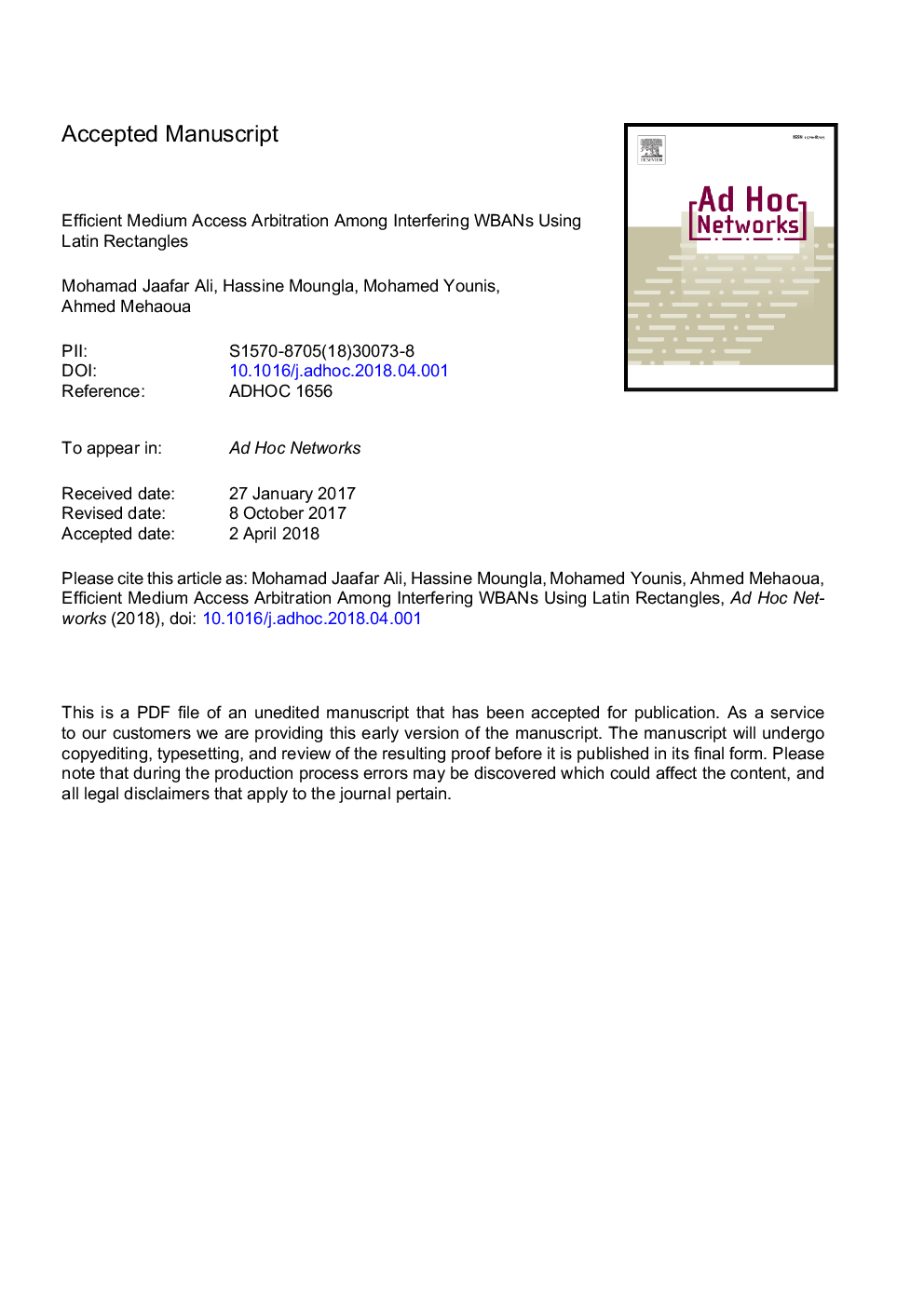| Article ID | Journal | Published Year | Pages | File Type |
|---|---|---|---|---|
| 6878398 | Ad Hoc Networks | 2018 | 20 Pages |
Abstract
The overlap of transmission ranges among multiple Wireless Body Area Networks (WBANs) is referred to as coexistence. The interference is most likely to affect the communication links and degrade the performance when sensors of different WBANs simultaneously transmit using the same channel. In this paper, we propose a distributed approach that adapts to the size of the network, i.e., the number of coexisting WBANs, and to the density of sensors forming each individual WBAN in order to minimize the impact of co-channel interference through dynamic channel hopping based on Latin rectangles. Furthermore, the proposed approach opts to reduce the overhead resulting from channel hopping, and lowers the transmission delay, and saves the power resource at both sensor- and WBAN-levels. Specifically, we propose two schemes for channel allocation and medium access scheduling to diminish the probability of inter-WBAN interference. The first scheme, namely, Distributed Interference Avoidance using Latin rectangles (DAIL), assigns channel and time-slot combination that reduces the probability of medium access collision. DAIL suits crowded areas, e.g., high density of coexisting WBANs, and involves overhead due to frequent channel hopping at the WBAN coordinator and sensors. The second scheme, namely, CHIM, takes advantage of the relatively lower density of collocated WBANs to save power by hopping among channels only when interference is detected at the level of the individual nodes. We present an analytical model that derives the collision probability and network throughput. The performance of DAIL and CHIM is further validated through simulations.
Related Topics
Physical Sciences and Engineering
Computer Science
Computer Networks and Communications
Authors
Mohamad Jaafar Ali, Hassine Moungla, Mohamed Younis, Ahmed Mehaoua,
